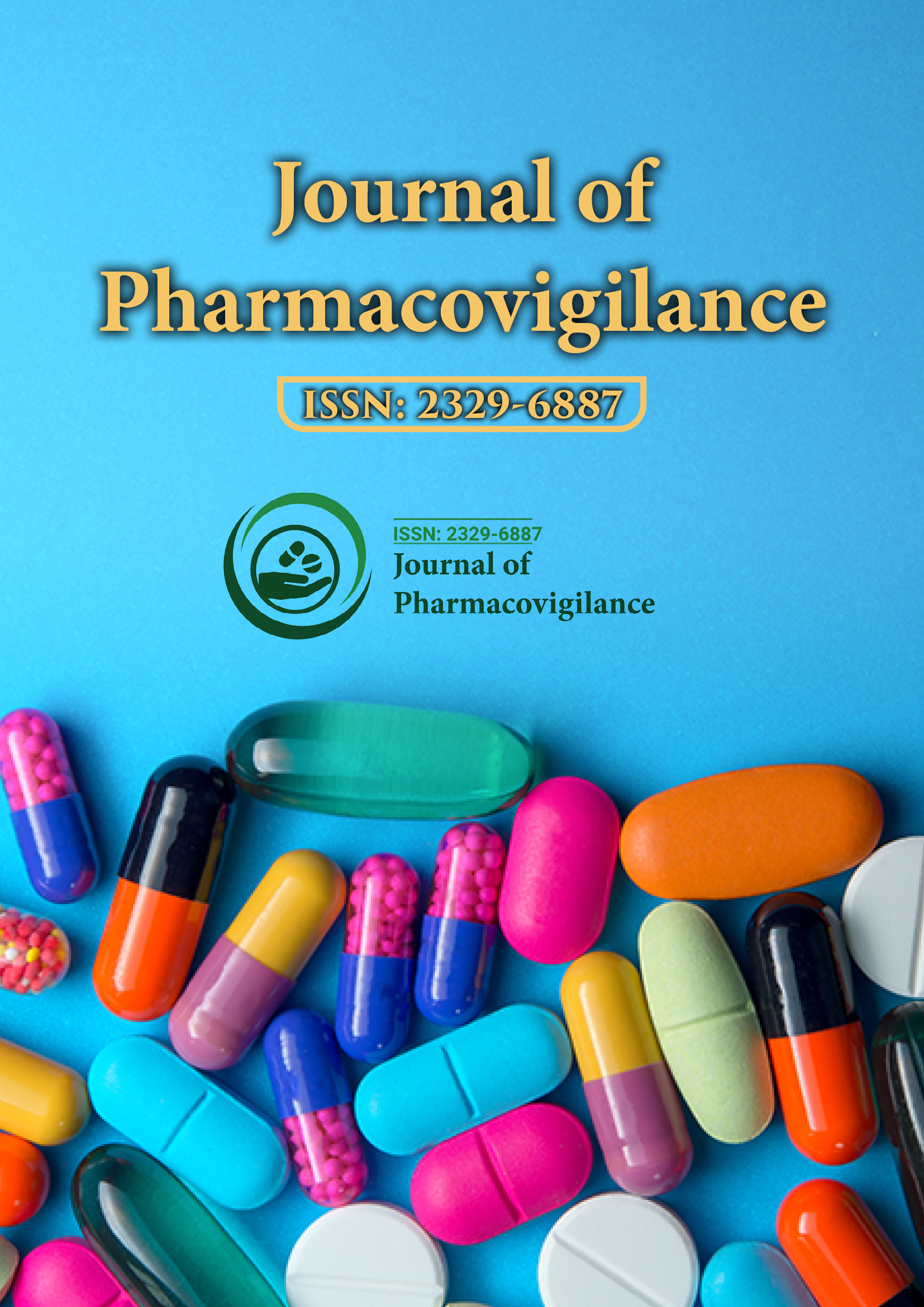Indexed In
- Open J Gate
- JournalTOCs
- The Global Impact Factor (GIF)
- RefSeek
- Hamdard University
- EBSCO A-Z
- OCLC- WorldCat
- Publons
- Euro Pub
- Google Scholar
Useful Links
Share This Page
Journal Flyer

Open Access Journals
- Agri and Aquaculture
- Biochemistry
- Bioinformatics & Systems Biology
- Business & Management
- Chemistry
- Clinical Sciences
- Engineering
- Food & Nutrition
- General Science
- Genetics & Molecular Biology
- Immunology & Microbiology
- Medical Sciences
- Neuroscience & Psychology
- Nursing & Health Care
- Pharmaceutical Sciences
Perspective - (2025) Volume 13, Issue 2
Improving Medication Safety Through Vigilant Post-Market Surveillance
Maya Collins*Received: 26-May-2025, Manuscript No. JP-25-29710; Editor assigned: 28-May-2025, Pre QC No. JP-25-29710; Reviewed: 11-Jun-2025, QC No. JP-25-29710; Revised: 18-Jun-2025, Manuscript No. JP-25-29710; Published: 25-Jun-2025, DOI: 10.35248/2329-6887.25.13.512
Description
Monitoring the safety of medications after they have been released to the public is a fundamental responsibility within healthcare systems. This ongoing vigilance ensures that patients receive the best possible care while minimizing the risks associated with pharmaceutical treatments. Although clinical trials conducted before drug approval provide essential data on a medication’s efficacy and common side effects, these studies are inherently limited. They involve relatively small groups of carefully selected participants, take place under controlled conditions, and last only for a finite duration. Consequently, clinical trials cannot capture every possible risk, particularly those that are rare, develop over longer periods, or emerge when drugs are used in more diverse real-world populations.
When a medication enters the market, it is exposed to a far broader and more varied group of individuals. This diversity includes people with different ages, underlying health conditions, genetic factors, and concomitant medications. These factors can influence how a drug behaves and can lead to the discovery of unexpected adverse effects that were not observed during clinical trials. It is for this reason that post-marketing surveillance systems also known as pharmacovigilance are indispensable for maintaining medication safety and protecting public health.
A key component of these surveillance systems is the systematic collection and analysis of reports concerning Adverse Drug Reactions (ADRs). These reports come from healthcare professionals, patients, and pharmaceutical manufacturers, all of whom contribute valuable information about any undesirable or unexpected effects experienced in real-world use.
The primary goal of this system is to detect potential issues early enough to prevent harm. Once a signal is identified, experts conduct a thorough assessment to understand the severity, frequency, and potential causes of the adverse events. Based on their findings, regulatory authorities may take action, which can range from updating product labels with new warnings to restricting certain uses or, in rare cases, removing the drug from the market entirely. This process ensures that medication use guidelines reflect the most current understanding of risks and benefits.
Active participation in adverse event reporting is essential for the success of pharmacovigilance efforts. Healthcare providers are encouraged to remain vigilant and report any unexpected or serious side effects promptly and accurately. To support this, ongoing education and training are critical, helping clinicians recognize and document adverse reactions effectively. Patients, too, play an important role when they are informed about potential side effects and motivated to communicate their experiences.
Technological advances have significantly improved the capacity to collect, manage, and analyze safety data. Digital platforms, including online portals and mobile applications, have streamlined the process of submitting adverse event reports, making it easier and more convenient for users. Meanwhile, sophisticated data analytics software enables the rapid examination of large datasets, helping to identify subtle patterns or unusual trends that may otherwise go unnoticed. Moreover, integrating safety reports with Electronic Health Records (EHRs) enhances the depth and accuracy of the information by providing context about the patient’s medical history and concurrent therapies.
Global cooperation among regulatory agencies, healthcare organizations, and pharmaceutical companies has become a cornerstone of effective pharmacovigilance. Sharing safety information across countries allows for more comprehensive monitoring, particularly for rare adverse events that might only be detected when larger populations are observed. This international collaboration promotes consistent risk assessments and coordinated safety measures, ultimately benefiting patients worldwide.
Conclusion
Continuous monitoring of medication safety after market introduction is crucial for safeguarding patient health and supporting effective treatment. Through coordinated collaboration, technological innovation, and a commitment to transparency and education, healthcare systems can better detect, assess, and respond to emerging safety concerns. This vigilant approach ultimately enhances patient outcomes, maintains public confidence in medical therapies, and strengthens the integrity of healthcare. By empowering patients to report side effects either through healthcare providers or direct reporting systems healthcare systems gain access to a wider range of data that enriches safety monitoring.
Citation: Collins M (2025). Improving Medication Safety Through Vigilant Post-Market Surveillance. J Pharmacovigil. 13: 512
Copyright: © 2025 Collins M. This is an open-access article distributed under the terms of the Creative Commons Attribution License, which permits unrestricted use, distribution and reproduction in any medium, provided the original author and source are credited.

